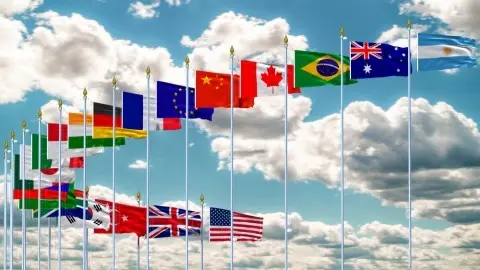G20: Trade war will get worse before it gets better
Resuming trade talks seems to be the best attainable result of the Trump-Xi meeting at the G20 summit. But even then, there are too many bridges to be crossed for a smooth path towards a deal. We think there will be another round of tariffs before the pain of the trade war forces both parties to strike a deal in the last quarter of this year
Hopes for a deal
By describing his latest phone call with Xi as a “very good conversation", President Trump has fuelled expectations that his meeting with Chinese counterpart Xi will lead to a cease-fire.
Where have we seen this before? In the run-up to the previous G20 summit in December 2018, Trump also tried his best to improve the negotiation climate after months of US tariff hikes and threats of more to come. Does this mean that the result will be the same as in December?
Beijing won't acquiesce easily...
A cease-fire is certainly a possibility but this time it will be harder to get done. Just agreeing to resume negotiations is not enough anymore. The collapse of the trade talks at the start of May has changed things.
Although President Trump keeps saying that China is very keen to cut a deal, the US administration now knows that China is not prepared to strike a deal at any price. President Trump's negotiating style is increasingly irritating Beijing. To get the trade talks going again, Trump will have to show that the US respects China. The President could do that by, for example, agreeing to reciprocity regarding penalties in case of non-compliance with a future deal.
That would also address the issue of the reliability of the US as a negotiating partner. Trump's actions toward Mexico earlier this month have given new meaning to the concept of ‘negotiating in good faith’. Threatening Mexico with tariffs only weeks after the last loose ends of the USMCA trade deal were wrapped up will have given rise to doubts in Beijing about the value of a deal with the US.
But Trump needs something to show voters
For the trade talks to start again, President Xi has to make concessions as well. He will have to assure Trump that China is willing to offer more in new negotiations than during the last round of trade talks. Without this, President Trump has nothing to show back home when he returns from the G20 summit.
But even if talks resume, the failure of the latest round of negotiations should suggest to investors that a cease-fire is not necessarily around the corner.
The breakdown in negotiations in May shows that China is no longer prepared to have the US dictating the content of a trade deal. For the first time, Beijing has publicly set its own conditions for a deal to be struck and it has ramped up patriotic communication through its state-controlled media, preparing the Chinese people for a war of attrition.
This shows the risk is increasing that Trump's negotiation strategy may fail. Thus far, the President has been relying on his usual way of deal-making. About this style he wrote in "the Art of the Deal": ‘I aim high and then I just keep pushing, pushing and pushing to get what I am after’.
In his war on free trade, the pushing is being done by implementing tariff hikes and threatening to step that up if the other side does not give in to his demands. This has worked quite a few times with various countries. But China consciously chose to stand firm in the current conflict and accepts the price it has to pay: elevation of the US import tariff from 10% to 25% on US$200 billion of its exports to the US.
We think that Trump will stick to this negotiating strategy for a little bit longer. Even if the leaders agree to resume negotiations this weekend and refrain from imposing further trade restrictions for as long as the talks are ongoing, we think that there are too many bridges to cross for a deal to be struck smoothly. Also in this case, this would lead to a tariff hike on all remaining imports from China. China, in turn, will respond as it has thus far: by retaliating.
We expect a deal in 4Q
Failure to agree on the resumption of the negotiations during the G20 or failure to come to a deal after a new round of negotiations will inflict extra economic pain. This increases the willingness to make concessions and strike a deal on both sides. Let’s not forget: both sides want a deal in the end. China can hurt the US economically but it knows that the US can hurt China even more. President Trump needs a deal to show the American people that he delivers on his promises to get better terms of trade for the US. He knows that this is best done without the US economy having to suffer from Chinese retaliation for an extended period of time. We expect a deal to be struck in the last quarter of this year.
So it is likely that China as well as the US are prepared to make concessions in the end. After all, this is what's happened in the renegotiation of Nafta. To strike a deal, Trump had to accept that Mexico and Canada would not agree to all of his original demands.
This publication has been prepared by ING solely for information purposes irrespective of a particular user's means, financial situation or investment objectives. The information does not constitute investment recommendation, and nor is it investment, legal or tax advice or an offer or solicitation to purchase or sell any financial instrument. Read more
Download
Download article
26 June 2019
In case you missed it: It’s wait-and-see time This bundle contains 9 Articles